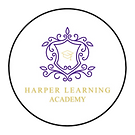
Kinesthetic
Learning Modality
Kinesthetic Learning Strategies In School
At Harper Learning Academy, we recognize that every child is unique and has their own way of learning. As a parent of a child with a kinesthetic learning style, you may notice that your child prefers to learn through physical activity and body movement. This type of learning is known as kinesthetic or tactile learning. In this blog post, we will discuss strategies to help your kinesthetic learner succeed in the classroom and at home.
It's worth noting that learning style is quite intricate, and most people have a combination of different learning styles. It's also important to remember that not everyone fits into one learning style. At Harper Learning Academy, we observe and communicate with your child to clearly understand how they learn best.
Learning Methods and Human Learning
Before we dive into strategies, let's first understand the different types of learning. According to research, there are three main types of learning: visual, auditory, and kinesthetic. Visual learners prefer to learn through pictures and diagrams, while auditory learners prefer to learn through listening and speaking. Kinesthetic learners, on the other hand, prefer to learn through physical activity and body movement.
Human learning is a complex process that involves several processes such as attention, perception, memory, and problem-solving. People learn in different ways, and it is important to understand your child's learning style to help them learn effectively.
Read-Write Learning vs. Tactile Learning
In traditional classrooms, the focus is often on read-write learning, which involves reading and writing notes, taking tests, and writing papers. This type of learning can be challenging for tactile learners as it does not involve physical activity or body movement. To help your kinesthetic learner, it is important to incorporate tactile learning into their education.
Tactile learning involves using the sense of touch to learn. This can be through hands-on activities, manipulating objects, or physical movement. By incorporating tactile learning into your child's education, you are providing them with a way to learn effectively and engage in the learning process.
Strategies to Help Tactile Learners Succeed
-
Incorporate Physical Activity - Tactile learners need physical activity to stay engaged and focused. Incorporate physical activity into your child's learning by allowing them to move around the classroom, take breaks to stretch or do jumping jacks, or even stand at their desk. This movement can help them process information and retain it better.
-
Use Manipulatives - Manipulatives are objects that can be moved, arranged, or sorted to help with learning. Manipulatives can be anything from blocks and puzzles to Legos and Play-Doh. These objects allow tactile learners to use their hands and engage in physical activity while learning. Use manipulatives to teach math concepts, spelling, and even science.
-
Role-Playing and Dramatization - Role-playing and dramatization are excellent ways for tactile learners to learn. These activities involve physical movement, and can help your child learn better. For example, if your child is learning about a historical figure, have them act out the person's life to help them remember important details.
-
Field Trips and Hands-On Learning Activities - Field trips and hands-on learning activities are excellent ways for tactile learners to learn. These activities allow your child to engage in physical activity while learning. For example, if your child is learning about the solar system, take them to a planetarium or use a model of the solar system to help them visualize and remember important details.
-
Use Technology - Technology can be an excellent tool for tactile learners. There are many educational apps and games that involve physical movement and hands-on learning. For example, your child can use a tablet or computer to manipulate shapes or objects to learn math concepts.
Who are some famous Kinesthetic Learners?
It can be difficult to determine famous kinesthetic learners as many successful individuals likely have a combination of learning styles. However, there are some individuals who are known to have a preference for kinesthetic learning. Here are a few examples:
-
Richard Branson - the founder of the Virgin Group has been reported to have a kinesthetic learning style. Branson has talked about how he struggled in school and preferred hands-on learning experiences.
-
Michael Jordan - the retired professional basketball player was known for his physical abilities on the court. Jordan has spoken about how he learned by doing and preferred to practice and experiment to improve his skills.
-
Serena Williams - the professional tennis player is known for her physical prowess on the court. Williams has talked about how she prefers to learn by doing. Practicing and physically performing different tennis moves helps her to internalize them.
-
Jamie Oliver - the celebrity chef has been open about his struggles in school due to his dyslexia. Oliver has discussed how he learned to cook through hands-on experience and experimentation.
-
Steve Irwin - the late wildlife expert and television personality had a passion for animals and the outdoors. Irwin was known for his energetic and physical approach to interacting with wildlife and teaching others about conservation.
While these individuals may have a preference for kinesthetic learning, it is important to remember that every person has their own unique way of learning and processing information.
In conclusion, understanding your child's learning style is essential to help them learn effectively. Kinesthetic learners need physical activity and body movement to learn effectively. By incorporating tactile learning into your child's education, you are providing them with the tools they need to succeed in the classroom and at home.
Harper Learning Academy is a non-profit educational program located in Byram, Mississippi that serves students with learning differences. Our goal is to create learning environments that help discover and cultivate students' gifts. We exist to give students a sense of purpose in the global society. If the traditional education system is not working for your child, please consider enrolling at Harper Learning Academy.
%20%20(1).png)